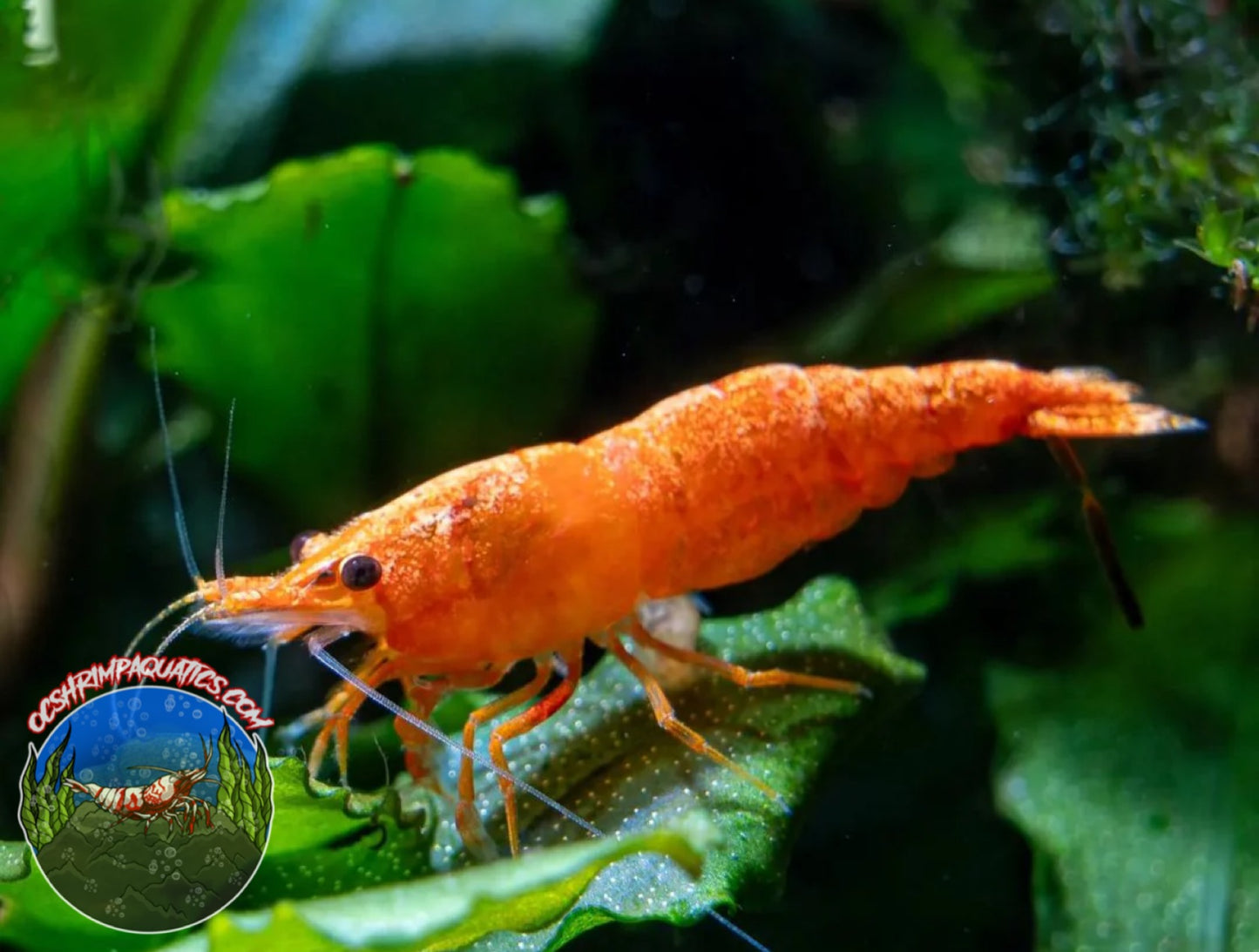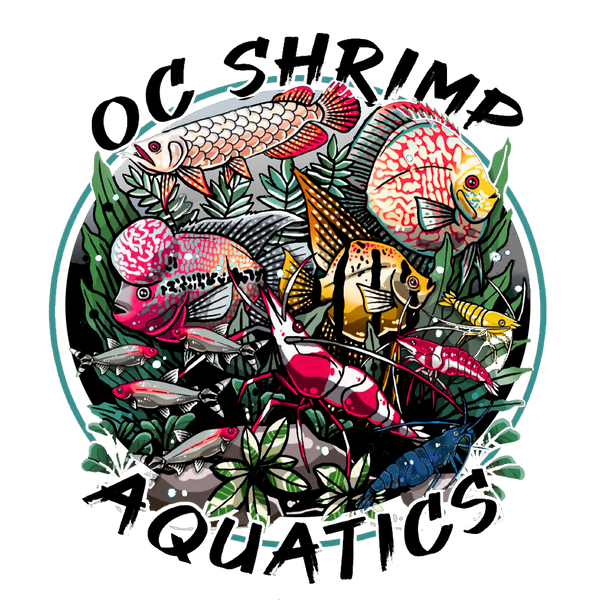OC SHRIMP AQUATIC
PUMPKIN SHRIMP
PUMPKIN SHRIMP
Couldn't load pickup availability
Share
The Pumpkin Neocaridina shrimp, a color morph of the popular Neocaridina davidi, is valued for its vibrant orange coloration that resembles a pumpkin. These shrimp are hardy, adaptable, and relatively easy to care for, making them a great choice for both beginners and experienced aquarists. Here’s a detailed guide to caring for Pumpkin Neocaridina shrimp:
Tank Setup
-
Tank Size: A minimum of 10 gallons is recommended. While smaller tanks can be used, larger tanks provide more stable water conditions and more space for the shrimp to thrive.
-
Tank Environment:
- Substrate: Use a fine gravel or sand substrate. Shrimp like to forage on the substrate, so a smooth, non-abrasive surface is ideal. Soil substrates can also be used if they are pH-neutral and do not significantly alter water parameters.
- Plants and Decor: Include live plants, such as Java Moss, Anubias, or other low-maintenance species. Plants not only provide hiding spots but also help with water quality by absorbing excess nutrients. Use driftwood, rocks, and other decorations to create a natural environment.
-
Water Conditions:
- Temperature: Maintain a stable water temperature between 68-78°F (20-26°C). A heater may be necessary for maintaining consistent temperatures.
- pH Level: Pumpkin Neocaridina shrimp prefer slightly acidic to neutral water. Aim for a pH range of 6.5 to 7.5.
- Water Hardness: They thrive in moderately hard to hard water. Aim for a hardness range of 6-12 dGH.
- Filtration: Use a gentle filter to keep the water clean without creating strong currents. Sponge filters or small hang-on-back filters are suitable. Regular water changes (20-30% weekly) are essential for maintaining water quality.
Diet
-
Diet: Pumpkin Neocaridina shrimp are omnivorous and have a varied diet. Feed them high-quality shrimp pellets or flakes, blanched vegetables (such as zucchini, spinach, or carrots), and occasional live or frozen foods like daphnia or bloodworms.
-
Feeding: Feed them once or twice a day, providing only as much food as they can consume within a few minutes to prevent overfeeding and water pollution. Ensure that the food is small enough for the shrimp to eat easily.

Order and get 100 reward points
Earn points by signing up for our rewards program

